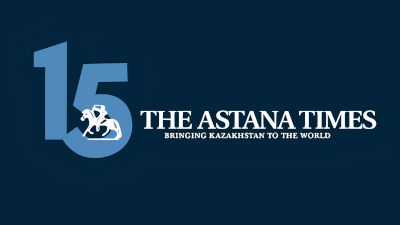ASTANA – In November, Kazakhstan’s Altyn Dala conservation initiative earned one of the world’s most coveted environmental accolades, Prince William’s Earthshot Prize, for its success in recovering once-critical endangered Saiga antelopes. In a recent interview published on The Astana Times YouTube channel, Vera Voronova, executive director of the Association for the Conservation of Biodiversity of Kazakhstan (ACBK) that leads the initiative, discussed what this global recognition means for the country’s conservation efforts.
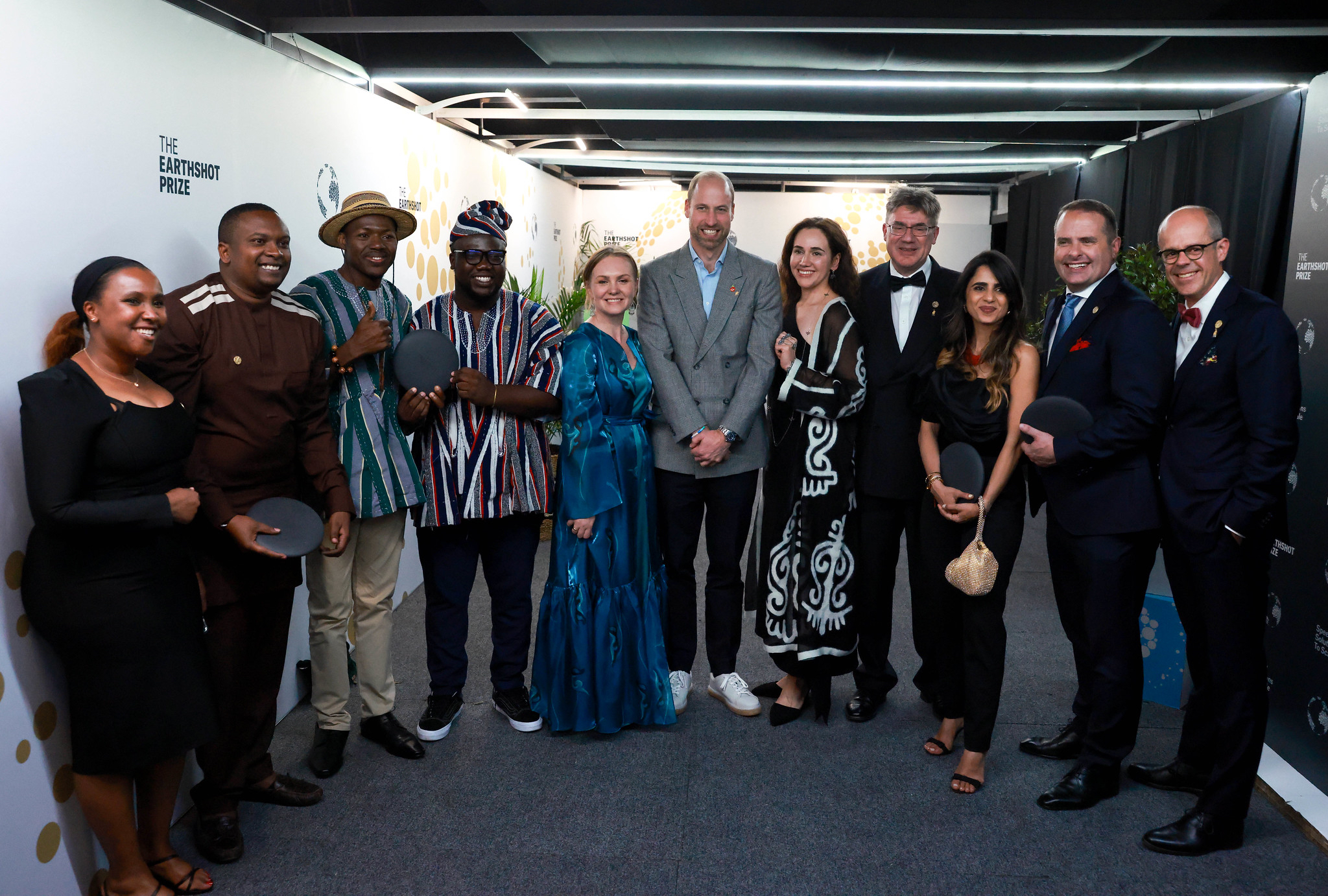
Vera Voronova (in the middle) with Prince William and other EarthShot 2024 Prize winners in Cape Town in November 2024. Photo credit: Earthshot Prize
“Absolutely everyone within the partnership [of the Altyn Dala initiative] and all stakeholders are so positive about this. Such a high level of global recognition of the work that has been done for the last two decades with so many people and partners,” said Voronova.
“It is really great to show this success, not only internationally, like other conservation communities can have a look and learn from our experience, but also to show how the success at the national level is being seen externally. I think it is a big proud for the people in Kazakhstan as well. When I was back, I heard so many positive voices around,” she said.
What is Altyn Dala initiative?
Altyn Dala, which translates as ‘golden steppe’ in Kazakh, was created in 2006. A group of national and international partners formed a partnership to conserve key animal species, steppe, and semi-desert habitats and improve the network of specially protected natural areas in Kazakhstan.
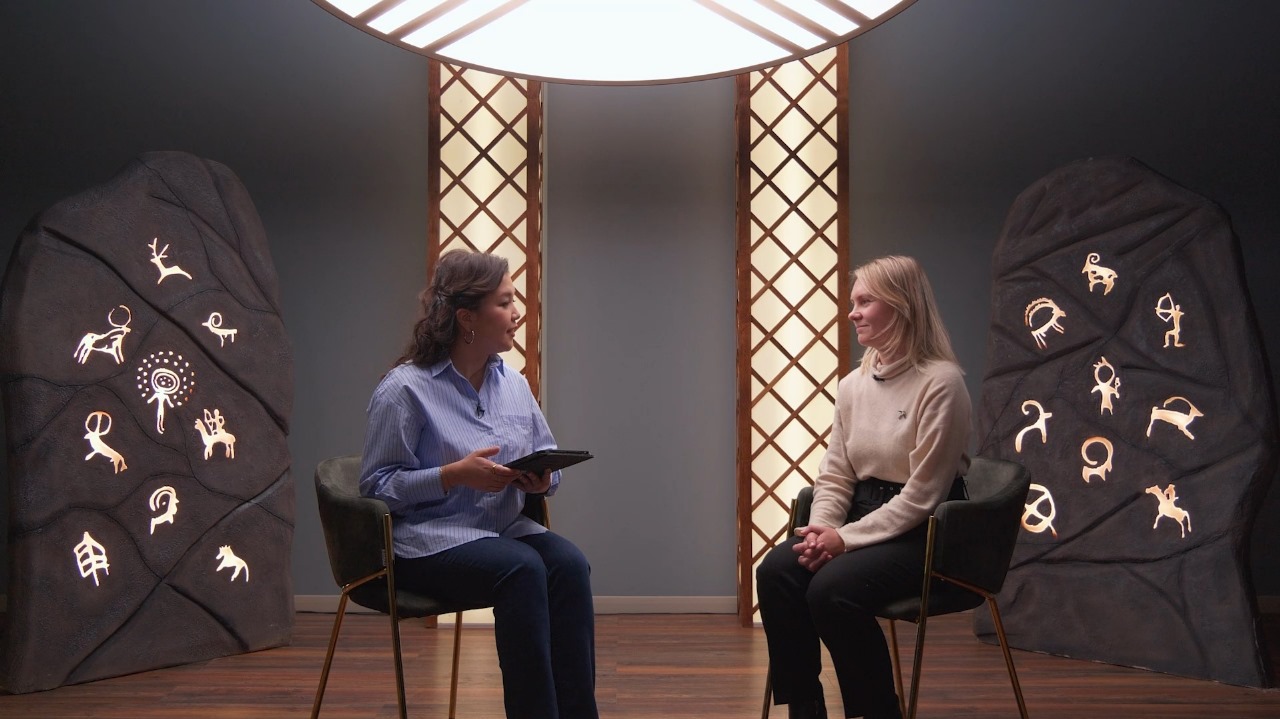
The Astana Times Senior Editor Assel Satubaldina and Vera Voronova during the interview. Photo credit: The Astana Times
The initiative has five partners. Led by the ACBK, it also involves the Forestry and Wildlife Committee of the Kazakh Ministry of Ecology and Natural Resources, Fauna & Flora (F&F), Frankfurt Zoological Society (FZS), and the Royal Society for the Protection of Birds (RSPB).
One of the most significant achievements is the recovery of the Saiga antelope population from just 334,000 in 2019 to 2.8 million individuals in 2024. The efforts to recover the population have been fluctuating for years. The population plummeted to an estimated 20,000 in 2003 due to intense poaching.
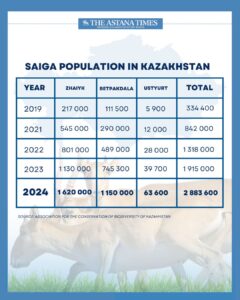
Population of saiga antelopes. Photo credit: The Astana Times
While this number increased to 295,470 with the government efforts, the efforts took a setback again in 2015 because of a mass epidemic that killed 200,000 saigas in just one month.
Poaching, habitat fragmentation, and barriers in migration routes remain key challenges in conserving this species.
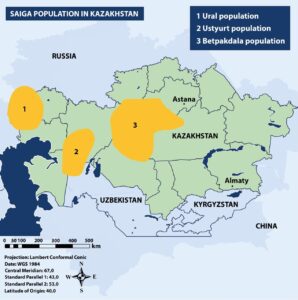
Photo credit: The Astana Times
Along with these efforts, the Altyn Dala team also established several new nature reserves, such as the Altyn Dala State Nature Reserve in 2012 and the Ulytau National Park in 2021, and expanded existing protected areas.
It also pioneered Kazakhstan’s first wildlife corridor, connecting the Altyn Dala State Nature Reserve and the Irgyz-Turgai State Nature Reserve. This corridor protects a migration route of saiga antelopes.
“The criteria [of the Earthshot Prize] would be the specific impact, and the impact is significant. It is about the significant recovery of the Saiga antelope from just 40,000 animals to 2.8 million individuals, but also about the scale of work that has been done by the government and their partners on the establishing of the protected areas in the country,” said Voronova.
Since the launch of the initiative, more than five million hectares of steppe landscape for wildlife have been protected. These areas were identified through field research and aerial surveys and play a critical role in preserving native steppe habitats essential for the saiga population and other key species.
But one thing that makes the Altyn Dala initiative stand out is the long-standing partnership between the government and civil society, which Voronova describes as a “very unique” one.
According to her, while the government leads many decision-making processes, civil society contributes by engaging with international funding and applying best practices. This includes offering science-based solutions to address challenges effectively.
“For example, the satellite monitoring program for the saiga, which we have done since 2009, contributes to developing approaches to collect data that would be used by the government for decision-making, expanding protected areas, [improving] patrolling,” said Voronova, highlighting that the Altyn Dala initiative represents a combination of different capacities from each partner.
Why is winning the Earthshot Prize important?
Founded by Prince William in 2020, the award seeks to find solutions to some of the world’s biggest environmental challenges. The award’s categories reflect the five challenges they seek to address by 2030 – Protect and Restore Nature, Clean our Air, Revive our Oceans, Build a Waste-Free World, and Fix our Climate.
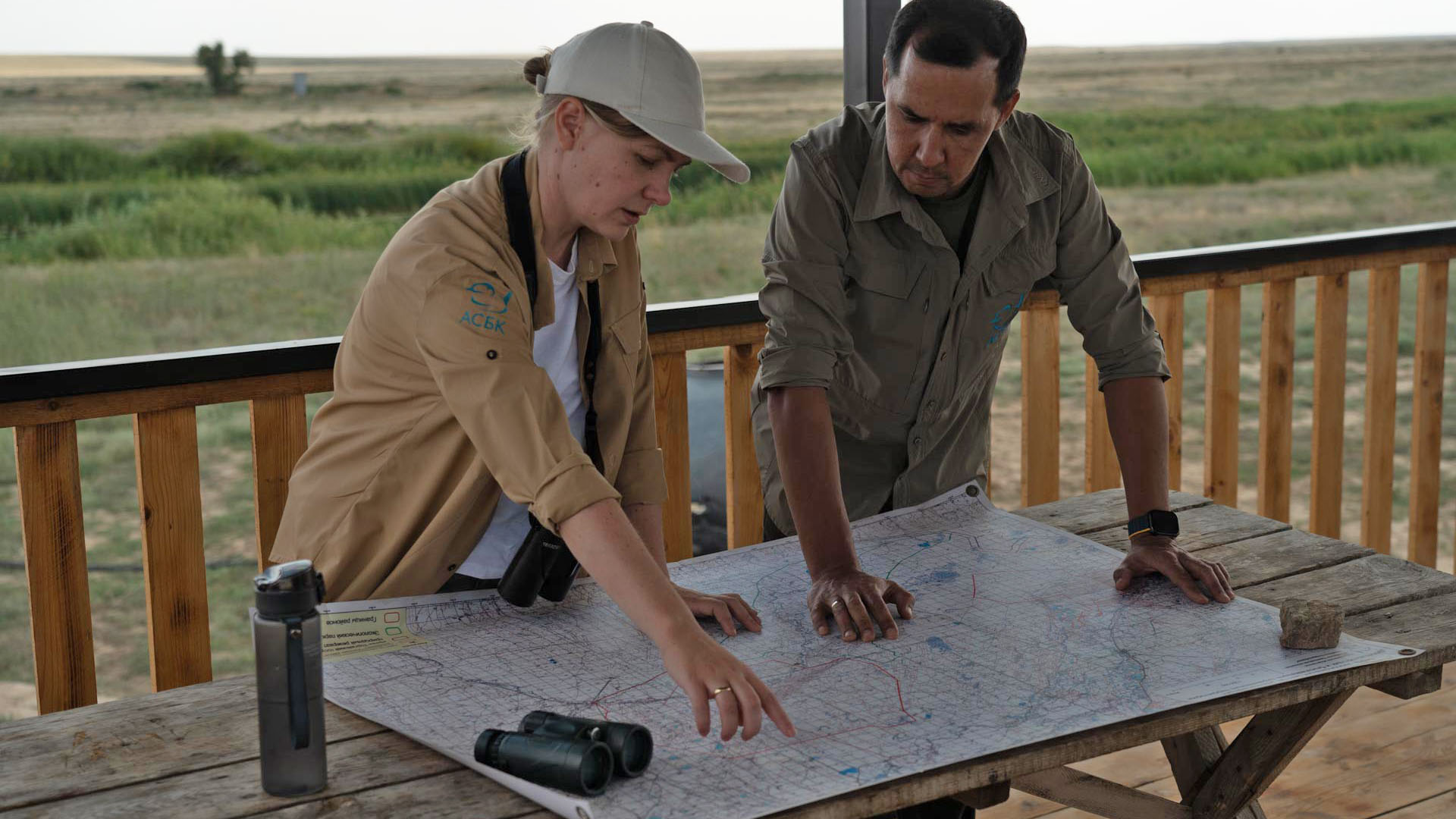
The Altyn Dala initiative was nominated for the award by the United Nations Environment Programme. Photo credit: Earthshot
The criteria are envisioned in the roadmap, which outlines 15 priority areas of interest—three for each Earthshot. Altyn Dala won the Protect and Restore Nature category, which includes protecting areas of high biodiversity such as forests, wetlands, and wildlife corridors, restoring damaged ecosystems, and feeding people while protecting nature.
Each year, the award committee receives thousands of nominations, which are narrowed down to a shortlist and reviewed alongside the expert advisory panel, a diverse team of global experts from various environmental fields.
The expert panel screens the nominations with the highest potential for positive impact and recommends 15 finalists.
The five winners, one for each Earthshot, are selected by the Earthshot Prize Council, a group of globally recognized individuals dedicated to driving positive environmental change. The council includes Prince William, Queen Rania Al Abdullah, Cate Blanchett, Sir David Attenborough, and Naoko Yamazaki.
“I am sure that the selection process was really tough. Can you imagine there are 2,400 applications, and even to choose the winners from the 15 finalists, it is the hard work because all finalists are really great,” said Voronova.
Beyond global recognition, the five winners receive one million pounds (US$1.2 million) each in cash prize. All 15 finalists also receive tailored support for one year.
Next steps
“It is a really great moment because even [though] there are so many success stories behind, the plans are very ambitious. You have been together with us on the arrival of the wild horses in June [2024],” said Voronova.
“We have a very ambitious project to recover the population of the kulans, wild Asiatic ass, in central Kazakhstan. There are also plans for the government to further expand protected areas to conserve the key habitats for this species. All these projects are really important, and we are looking to expand our network to engage more resources, more donors, more investment to boost these plans and strengthen our efforts,” she said.
The next important step would be adopting a national biodiversity strategy, formally known as the Concept for Biodiversity Conservation and Sustainable Use.
Voronova said a second group of Przewalski’s horses is also expected to arrive in June, one year since the first seven horses landed in Kazakhstan, the first stage of the Return of Wild Horses project.
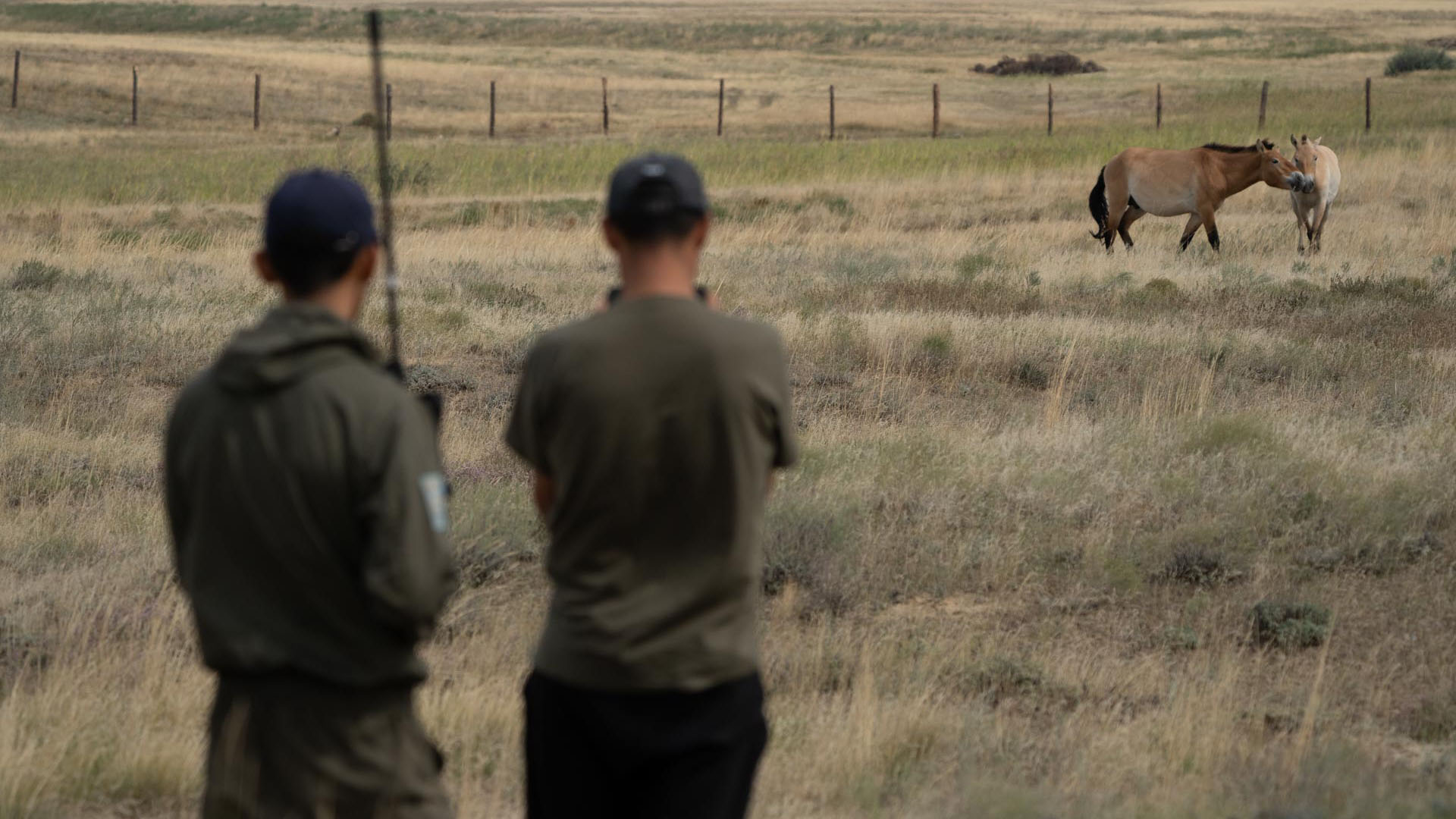
One of the key directions of the initiative is the reintroduction of species once inhabiting this region. Photo credit Earthshot
“We are also translocating kulans from Altyn Emel National Park in the south to central Kazakhstan. This project started in 2017. I am proud to talk about it now because it is quite a hard project because the distance between Altyn Emel National Park and the Altyn Dala reserve is more than 2,000 kilometers,” she said.
Initially, the association used helicopters to transport the animals, which was efficient yet very costly and limited the number of animals that could be transported. In October, for the first time, they tried ground translocation over this long distance.
“We used containers in the trucks. Successfully, 24 Kulans were translocated in this way. The animals spent 50 hours on the way, and everyone arrived alive. It was a great result. I am really proud of the team who put their efforts into this. This makes us hope that we can scale this project as well,” she said.
Watch the full interview with Vera Voronova on The Astana Times YouTube channel.

